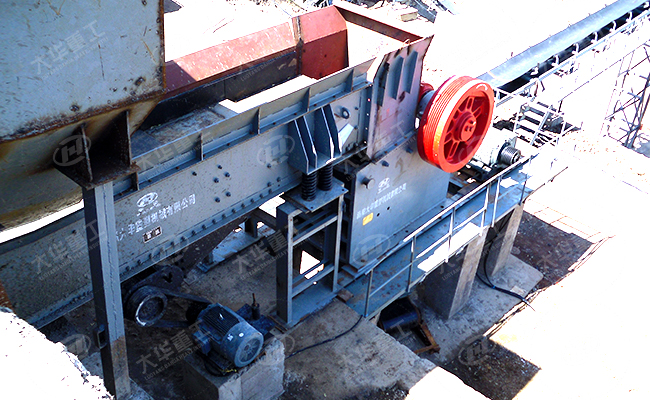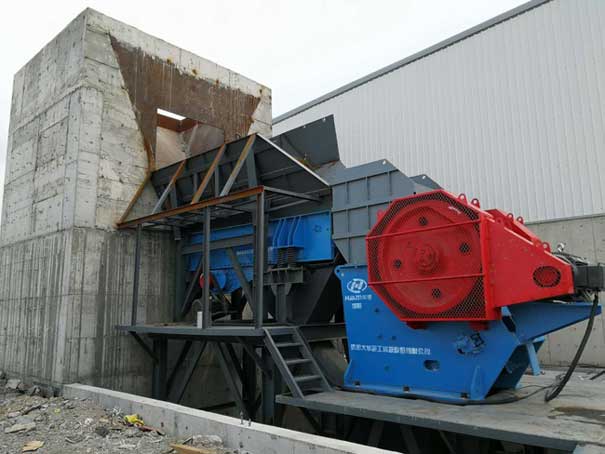The problem that the belt feeder often faces is the problem of belt deviation, which may even affect production. In order to ensure that the belt feeder can work normally, it is necessary to understand the related problems and solutions of belt deviation to ensure the normal operation and production of the equipment work properly.

- Causes of belt deviation
There are three main reasons for the deviation of the belt of the belt feeder: one is the unbalanced driving force on both sides of the belt; the second is the lateral force of the drum or the idler on the belt; the third is the drum, idler, frame, etc. The main mechanical parts are poorly produced, processed or installed, and the equipment vibrates during operation. - Solution to belt deviation
In response to the problem of belt deviation, in addition to product design that meets the requirements and excellent quality, adjustments during use are also necessary, including adjustment of drums, idlers and tensioning devices.
(1) Adjust the position of the driving roller and the driven roller
The axis of all rollers in the belt feeder must be perpendicular to the center line of the length of the belt feeder. If the deviation is too large, it will inevitably cause the belt to deviate. For the head roller of the feeder, adjust it in the other direction of the deviation direction. The adjustment of the tail driven roller is opposite to the adjustment of the head roller. The adjustment of the bearing seat of the tail driven roller is mostly carried out by tightening bolts in the tensioning device. This method can effectively eliminate belt problems caused by belt slack and machine skew.
(2) Adjust the roller group
When the belt runs in the middle of the feeder, adjust the position of the roller group to adjust the deviation. When the belt deviates to the left, the left idler set moves forward in the belt running direction or the right idler set moves backward; when the belt deviates to the right, the right idler set moves forward or left in the belt running direction the side roller group moves backward. The method of adjusting the roller set can eliminate the problem of belt deviation caused by rack skew, uneven material distribution and vibration.
(3) Adjust the tensioning device
The belt feeder generally adopts two types of tensioning structures of heavy hammer type or mechanical screw type. The reversing roller installed on the heavy hammer tensioned should be perpendicular to the belt length direction, and also perpendicular to the vertical line of gravity to ensure that the center line of the roller is horizontal. When spiral tensioning is used, the two bearing seats of the tensioning roller should be translated simultaneously to ensure that the axis of the roller is perpendicular to the longitudinal direction of the belt.
(4) Spreading and sticking problems of belt feeder
The spreading problem of the belt feeder can be solved by reducing the running speed of the belt, adjusting the opening of the material outlet or increasing the height of the baffle. Sticky materials on the inner and outer surfaces of the belt can be solved by installing an automatic cleaning device. The sticky material on the outer surface of the roller and idler can be solved by a scraper device.
The deviation problem of the belt feeder, under the premise that the product quality is qualified and the installation is correct, the specific reasons for the deviation of the belt must be analyzed and completed by configuring or adjusting the relevant devices.

